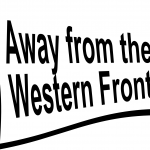Feedback
For the members of Minehead Quilters and for members of the public at events where the banner was on display, this project had quite an impact.
Many of the quilters had to learn new skills for the project – not just technical skills but also carrying out historical research and working together on a creative piece. The final result was deeply satisfying for some of them and gave people an unexpected angle on a side of the First World War about which they knew very little.
At the outset, a few of the quilters were doubtful about their ability:
- It sounded interesting but probably beyond my stitching capabilities.
- I did not know how we would all tell the story in our separate squares.
Some learnt new things about the war:
- As the weeks went on and everybody was talking about how many horses had died, that caught my attention.
- I wanted to do a poem about the feelings the men had talked about and to achieve something lovely instead of war.
Some learnt new skills, including working with fabrics and teamwork:
- Working together to a set formula.
- I searched my stash of fabrics, looking for muted colours and suitable textures.
- How to create free motion stitching using my sewing machine and a quilting foot.
- Patience.
- I learnt how to draw a horse!
- How materials can depict landscapes, buildings etc.
- I have never been able to draw, especially animals, but a friend came to the rescue.
For many it was an enjoyable experience:
- I liked being part of a group working towards the final piece.
- We were working towards one goal, it brought everyone together.
- It was good to see other people’s interpretation on each of their squares.
- This has been a very moving and emotional experience, I feel that I have got into someone else’s life and seen the war from a completely different perspective.
The following comments were from exhibition visitors:
- Beautiful and emotive, with much to think about.
- My great-grandfather, George Ayres, fought in WWI in the Royal Horse Artillery. He loved his horses and it broke his heart when they were hurt. He survived every major battle, and came home, gassed, to his 5 year old son Bert, my grandad, who was so proud of him. God bless you for this fantastic piece of important history!
- The banner is amazing, such beautiful detailed work telling the story of horses in the war so well. The pop ups give great detail too, and enhance the story. An amazing piece of work, thank you.
Some were inspired to take the project further:
- Getting involved with this project and seeing all the blocks that others had done made me want to know more about the war.
And finally …
Here’s one particular story to demonstrate the success of the ‘Horses in the War’ project, as described by Jane Sharp, the project manager:
- At the start, one lady was not very interested in the project or the subject and was a little negative about it all. She refused to complete the baseline questionnaire. However, she read Susan’s book and helped the others with questions about their squares. She was instrumental in the construction of the banner at the end of the project. I drew up a separate end of project questionnaire for her and this time she completed it. I was surprised with her comments, which included that she learned patience, adaptability and problem solving. The part she enjoyed the most about her contribution was “stretching my mind again, and then I got to enjoy it”. She said that she had learned how many horses and mules were involved and also commented that she was surprised at how the group got involved in the project. I consider that this was a success, considering her attitude at the start of the project!
Click here for an evaluation report about the ‘Horses in the War’ project.


